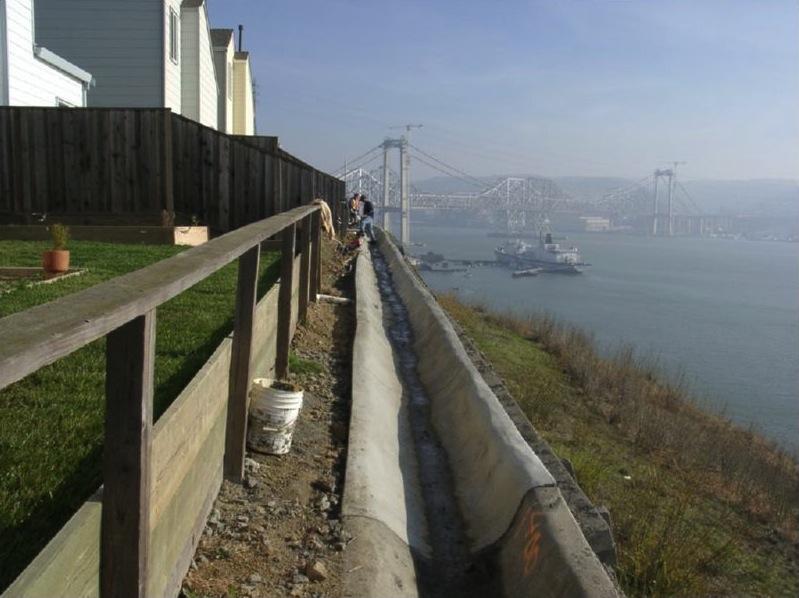Dr. Ross Stein is scientist emeritus at the United States Geological Survey, an adjunct professor of geophysics at Stanford University and the cofounder of Temblor.net, a startup that enables users to freely access data about their natural catastrophe risk.
With the rainy season fast approaching, we sat down with geophysicist Dr. Ross Stein to discuss how Bay Area homeowners can better understand and mediate their risk for landslides. Of course, the Bay Area is known for its beautiful scenery and temperate weather, but it’s also known for frequent seismic activity and landslides. Dr. Stein has been studying the Bay Area for more than four decades, and he says both the region’s beauty and susceptibility to disasters come courtesy of the same force: the San Andreas Fault. Just as the San Andreas Fault is to blame for the Bay Area’s notorious earthquakes, it has also created conditions that make the Bay Area especially vulnerable to landslides.

The same geophysical forces that created the Bay Area’s dramatic scenery are also responsible for its increased landslide risk. Photo, Engineered Soil Repairs, 2016
Dr. Stein says two central factors precipitate landslides: steep slopes and loosely packed soil, both of which typify the Bay Area’s geology. He also points to a third factor that increases landslide risk: rain. As we move into the cooler, wetter months, the region becomes more vulnerable. Dr. Stein identifies the Santa Cruz Mountains region—with its steep terrain, loosely packed soil, and greater exposure to rain and fog—as an area that’s especially at risk for landslides. “But even areas that are relatively flat are susceptible,” he adds. “Measurements in downtown Berkeley have identified shifting soil, which indicates the area is at risk.”
Other factors can contribute to landslide risk, too. “Earthquakes are the big wildcard,” says Dr. Stein. When landslides are triggered by earthquakes, they occur quickly (typically following a seismic event by less than a minute) and can cause great destruction. For example, most of the 80,000 deaths from 2008’s Wenchuan earthquake in central China were due to landslides. So far, the Bay Area seems fortunate. While the 1989 Loma Prieta earthquake triggered some minor landslides, Dr. Stein notes that earthquake-related events are rare for the region. Indeed, there’s little historical evidence of earlier earthquakes triggering major landslides.
Given the Bay Area’s very real exposure to earthquake and landslide risk, Dr. Stein recommends that anyone who owns or is thinking of owning a home in one of the region’s many hilly neighborhoods should do some research to understand the potential for such events. He advises homeowners to look at state survey maps to understand the potential risk for a landslide affecting their home. Anyone who owns property in an area identified as high or very high risk should assume their home will need engineering adaptations to withstand earthquake and landslide events. They should then consult with a licensed geotechnical engineer to plan for any structural changes and get a sense of their costs.
Choosing a home with a beautiful hillside view doesn’t automatically mean putting yourself in harm’s way. Even in high-risk areas, structural remedies can make homes safer. Dr. Stein explains that a geotechnical engineer will search for the bedrock around a home built on a hill. Builders will then attach pylons from the house into the bedrock, securing the home and making it less vulnerable to earthquakes and landslides. Alternately, a hillside home built on stilts may be stabilized through the addition of cables. Unfortunately, engineering solutions like these don’t come cheap. Dr. Stein notes that costs can vary due to a number of factors. For instance, in cases where the slope was cut to build the home, the structure may be closer to bedrock and consequently easier to stabilize. In all cases, Dr. Stein warns that “people should avoid going straight to general contractors,” adding that it’s crucial for homeowners to consult with someone who fully understands the geological particularities of the region.
While landslides will remain unpredictable, in the future, homeowners may have more information close at hand to understand and evaluate their risks. As GPS tracking becomes more common (it’s already a central feature of smartphones), Dr. Stein foresees that soon we may have devices that monitor soil disruptions at the foundations of our homes. Improvements in satellite imagery and monitoring technology can also make it possible for Bay Area residents to fully appreciate the risks of living in this beautiful region.
